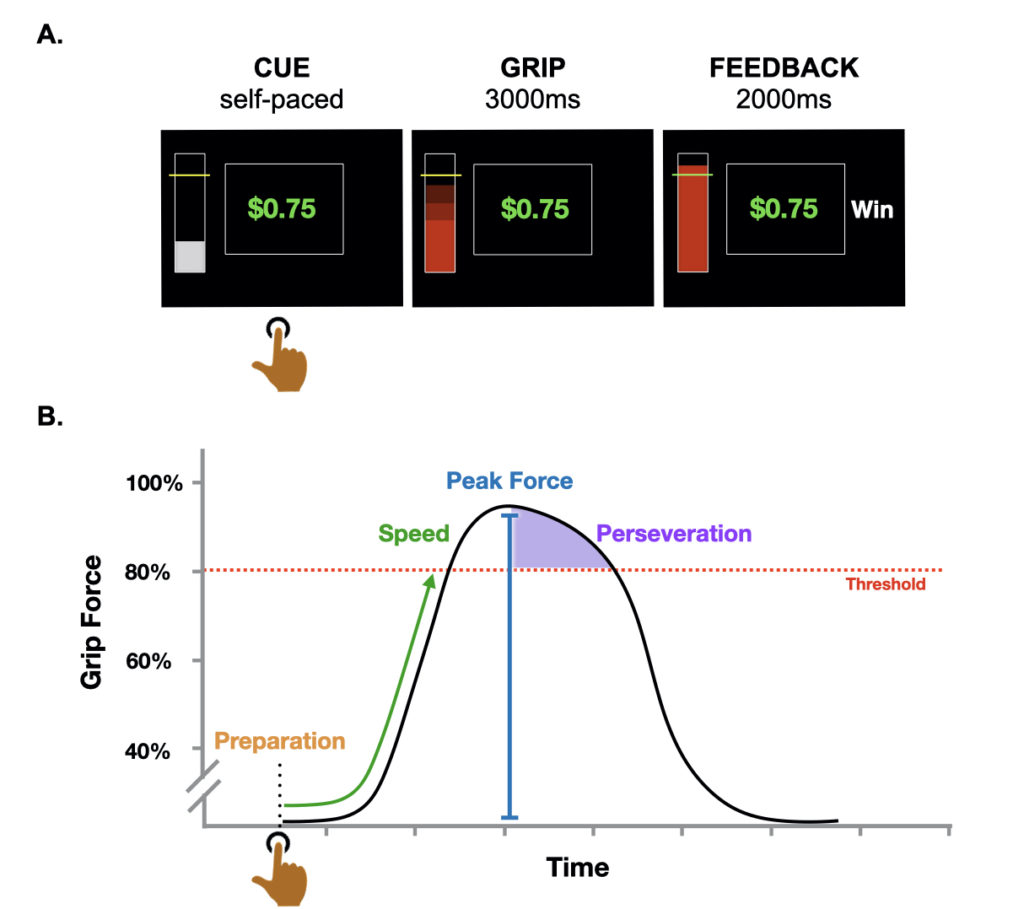By Alexandra Rodman and Leah Somerville
Every day, we make judgments about how to act that weigh the potential benefits of an outcome against the cost of obtaining the outcome. For example, humans and other mammals will work harder for larger reward outcomes than small ones. Adolescence has long been considered a phase of the lifespan marked by increases in reward-driven behaviors and hyper-responsiveness to reward cues (e.g., enhanced engagement in key reward-processing brain circuits). To date, however, it has been unclear whether this shift is driven by differences in underlying value assessment of reward cues themselves, or differential use of reward cues to guide action. In our recent study, we adapted a classic physical effort paradigm to measure whether adolescents and adults differed in a) effort-based markers of valuation itself, and b) strategic use of effort to obtain reward. One hundred and three participants aged 12-23 years completed a task that involved exerting low or high amounts of physical effort, in the form of a hand grip, to earn low or high amounts of money.

Participants were shown how hard to squeeze (yellow line) and how much was at stake for each trial. They viewed a red progress bar while they squeezed a hand dynamometer to obtain the money reward. Below, we illustrate how we quantified measures of effort exertion from the grip force timeseries data for each trial, including grip strength (blue) and speed (green) output, perseverative grip (purple), preparatory delay (orange), and opting out of trials altogether (not shown).
We found that younger adolescents are willing to work just as hard as adults (proportional to their overall strength) to obtain high rewards. However, adults were more strategic about when and how they optimize effort exertion, as they preserved their energy for more worthwhile outcomes. These findings suggest that age-related differences in reward-related behavior that are often observed in the transition from adolescence to adulthood may reflect differences in the use of incentives to strategically allocate effort, rather than differences in the motivational value of rewards themselves. This work challenges the prevailing theory that adolescents simply value rewards more by demonstrating that layered on similarity in motivational value for monetary reward, there are important differences in the way behavior is flexibly adjusted in the presence of reward from adolescence to young adulthood. Our current work is extending this framework to characterize the value of social rewards across this developmental stage.
Alexandra Rodman is a Postdoctoral Fellow in the Stress and Development Lab at Harvard University.
Leah Somerville is a Professor of Psychology at Harvard University
Learn more in the original research article:
How Adolescents and Adults Translate Motivational Value to Action: Age-related Shifts in Strategic Physical Effort Exertion for Monetary Rewards. Alexandra M Rodman, Katherine E Powers, Catherine Insel, Erik K Kastman, Katherine E Kabotyanski, Abigail M Stark, Steven Worthington, Leah H Somerville. J Exp Psychol Gen. Published online ahead of print, 2020 Jun 4.
News Types: Community Stories
